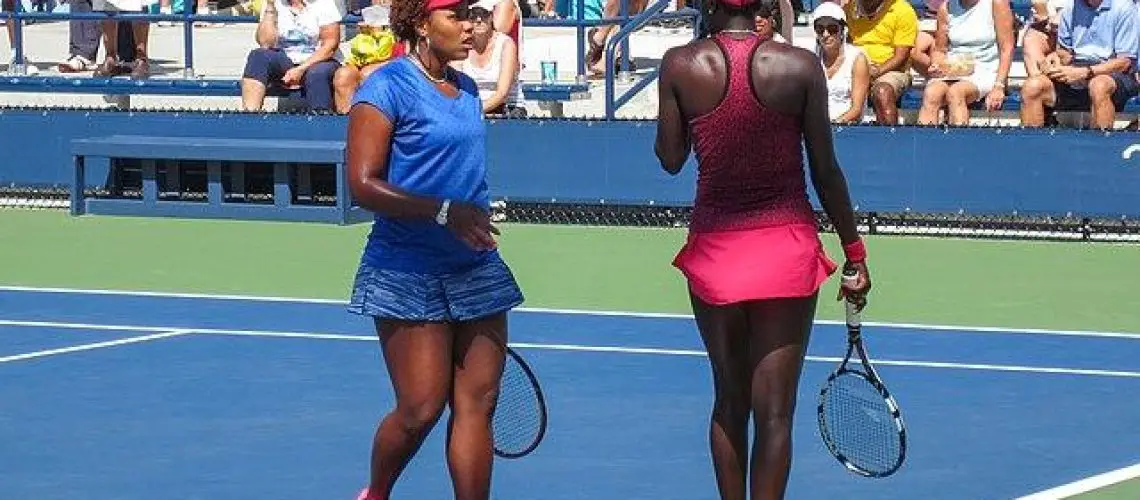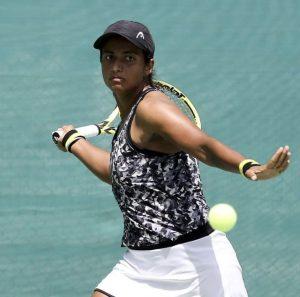We may earn money or products from the companies mentioned in this post.
Introduction

Welcome to the world of tennis, where every serve has the potential to make or break a match The importance of a proper tennis serve cannot be overstated It is not just about getting the ball in play; it is about establishing dominance and setting the tone for the entire match
Establishing Dominance
A powerful and accurate serve can instantly establish dominance on the court Picture this: you step up to the baseline, ready to unleash your serve with all your might The ball soars through the air, effortlessly gliding over the net, leaving your opponent scrambling to return it This display of power sends a message that you mean business – you are in control
Setting the Tone
The first few points of a match often set the tone for what’s to come A well-executed serve can create momentum and confidence right from the start Imagine launching a perfectly placed ace that leaves your opponent feeling uncertain and off balance They start questioning their abilities while you gain an upper hand mentally
A proper tennis serve not only lays down a marker but also creates opportunities for strategic play By serving effectively, you can dictate how each point unfolds, putting yourself in advantageous positions throughout the match
In conclusion, mastering your tennis serve is crucial if you want to excel in this sport It is not just about technique; it’s about harnessing power and precision while keeping your opponents guessing So next time you step onto that court, remember that a strong serve isn’t just another shot – it’s an opportunity to take control and make your mark on the game
The Seven Steps to Serve in Tennis

Step 1: Proper grip and racket preparation
One of the fundamental aspects of a great serve is having the proper grip and racket preparation There are two main types of grips to consider: the Eastern forehand grip and the Continental grip Each grip has its pros and cons, so it’s essential to understand their differences
The Eastern forehand grip offers more power and control but may require some adaptation for beginners On the other hand, the Continental grip is easier for beginners to learn but may sacrifice some power in exchange for versatility
In addition to the grip, paying attention to your racket head position and wrist movement is crucial The correct positioning will allow you to generate more power and accuracy as you execute your serve
Step 2: Stance and body positioning
Your stance and body positioning play a significant role in executing an effective serve There are two primary stances used in tennis serves: the platform stance and the pinpoint stance
The platform stance provides a stable base, allowing for better balance during your serve It suits players who prioritize consistency over power On the other hand, the pinpoint stance allows for explosive power by utilizing a quick weight transfer from back foot to front foot during the service motion
Considering factors such as personal preference, playing style, and court conditions will help you choose which stance works best for you Additionally, maintaining proper weight distribution on your feet is essential for balance throughout your entire service motion
Step 3: Ball toss
The ball toss sets up everything that follows in your serve motion It’s important to understand how your non-dominant hand plays a role in achieving a consistent ball toss
Additionally, finding the ideal height for your ball toss is crucial The height of your toss can greatly impact the power and accuracy of your serve Experimenting with different heights and focusing on maintaining consistency will help you achieve a more reliable serve
Step 4: The backswing, trophy position, and racket drop
The backswing, trophy position, and racket drop are key components of a successful serve Developing a smooth backswing sets the foundation for generating power in your shot
Achieving an efficient trophy position involves proper shoulder rotation and tilt, as well as ensuring the correct racket angle and arm alignment This position allows you to maximize your potential energy before initiating the forward swing
Mastering the racket drop is crucial for timing and generating racquet head speed It’s important to practice this motion to ensure fluidity and coordination throughout your service motion
Step 5: The swing and contact with the ball
Once you’ve completed the previous steps, it’s time to focus on executing a powerful swing and making clean contact with the ball
The role of leg drive cannot be underestimated when it comes to generating power in your serve Utilizing proper hip rotation also plays a significant role in determining the direction of your shot
Making clean contact with the ball at an ideal point on your strings is essential for maximizing power and control Timing considerations should also be taken into account to ensure that you hit the ball at its optimal trajectory
Step 6: Follow-through, extension, and pronation
Your follow-through is critical in determining the quality of your serve A complete follow-through allows for better control over pace, spin, and accuracy
Proper arm extension during your service motion helps generate pace and power Paying attention to your pronation, which is the rotation of your forearm, can add spin to your serve and make it more challenging for opponents to return
Step 7: Landing and recovery
After executing a powerful serve, landing on your front foot is essential for maintaining balance and stability This position sets you up for a quick recovery and prepares you for the next shot
Recovering quickly after your serve involves getting back into the ready position as efficiently as possible Improving reaction time will allow you to anticipate and respond effectively to your opponent’s return
Common Mistakes and How to Fix Them

Poor Ball Toss Consistency
One common mistake many players make is having poor ball toss consistency When your ball toss is inconsistent, it becomes challenging to execute a proper serve Your ability to control the direction and height of the ball toss greatly affects your entire serve motion
To fix this issue, focus on developing a consistent ball toss technique Start by practicing your ball toss in front of a mirror or with a partner who can provide feedback Pay attention to the height and location of your toss and make adjustments as needed By consistently practicing your ball toss, you will improve your overall serve accuracy and effectiveness
Racket Not Reaching Optimal Trophy Position
Another common mistake is failing to reach the optimal trophy position with your racket during the serve motion The trophy position refers to the position where your racket is pointing towards the sky just before you start the forward swing
To correct this error, focus on maintaining proper racket positioning throughout each stage of the serve Practice raising your racket up towards the trophy position with each repetition, ensuring that it points directly upwards before initiating the forward swing By consistently achieving the optimal trophy position, you will have better control over your serves and generate more power
Inability to Generate Power Due to Poor Body Mechanics
Poor body mechanics can significantly impact both power and accuracy in tennis serves Many players struggle with generating enough power due to incorrect weight transfer or inefficient use of their legs and core muscles
To address this issue, concentrate on improving your body mechanics through targeted exercises and drills Work on strengthening your legs and core muscles for increased stability and power generation during serves Additionally, focus on transferring weight from back foot to front foot smoothly for maximum energy transfer By honing your body mechanics, you will unlock greater power potential in your serves
Conclusion

When it comes to mastering the tennis serve, practice truly makes perfect The importance of repetition cannot be emphasized enough By consistently working on your serve, you can improve both your technique and overall performance on the court
Practice makes perfect: importance of repetition in mastering the tennis serve
Repeating the same movements over and over again may seem monotonous, but it is a crucial step towards mastery Just like any other skill, the more you practice your serve, the better you will become at it Each repetition helps to reinforce muscle memory and fine-tune your technique
Drills to improve specific aspects of your serve
To further enhance your serve, incorporating drills that target specific aspects is essential These drills focus on areas such as ball toss consistency, timing, racquet head speed, and follow-through By isolating these elements and practicing them individually, you can identify weaknesses and work on improving them
Setting goals for improvement
Achieving significant progress requires setting clear goals for yourself Whether it’s increasing your first-serve percentage or adding more power to your second serves, having specific targets helps keep you motivated and focused during practice sessions Break down these goals into smaller milestones that are achievable within a shorter time frame
Remembering that every player is unique – tailoring your technique to fit your style
While there are general principles for a good tennis serve technique, it’s important to remember that every player is unique Tailoring your technique to suit your own style can enhance not only the effectiveness but also the enjoyment of serving Experiment with different grips, stances, or even variations of spin to find what works best for you
In conclusion, mastering the tennis serve requires dedication and repetition By incorporating specific drills, setting realistic goals, and adapting your technique to suit your individual style, you can improve your serve and elevate your game on the court So get out there, practice relentlessly, and watch as your serve becomes a weapon in your arsenal
Useful Links

How to improve your Tennis Serving technique in 5 easy …
How To Serve In Tennis In 7 Steps
https://gentlemansjour.wpengine.com/steps-perfect-…
An 8-Stage Model for Evaluating the Tennis Serve – PMC
How to Improve Your Tennis Serve
Advanced Tennis Serve Technique In 7 Steps – Vimeo
Tennis Serve Video Tips
How To Serve In Tennis In 7 Steps
How To Serve In Tennis In 5 Steps? [2023 Updated]
5 Tennis Serve Tips for Better Technique & More Power
How To Boost Your First Serve Percentage (in 4 Steps)
My first E-book. 7 Steps to a Powerful Serve
How To Teach the Tennis Serve to Adults
How to Serve in Tennis | Fast & Slice Serve (with Pictures)
How to stop worrying about your serve
7 Steps To Improve Kick Serve In Tennis (With Pictures)
Tennis Serve Trophy Pose: A Step-by-step Guide
A Step-By-Step Guide To Mastering The Serve






